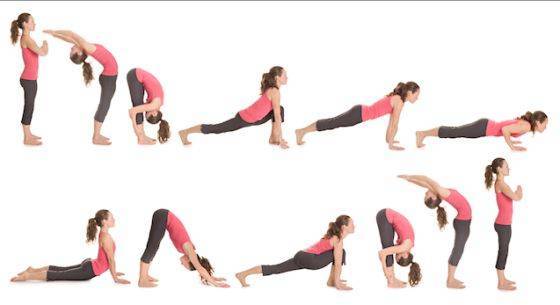Introduction:
Vinyasa yoga is one of the most widely practiced yoga forms in today’s Western yoga classrooms. Individual positions or “asanas,” are linked with deep breaths in a series of fluid movement sequences in Vinyasa yoga.
Each sequence in a Vinyasa yoga class builds on the previous one, gradually progressing to deeper and more advanced postures as the training progresses. A Vinyasa yoga session often includes a variety of standing, sitting and supine poses as well as twists, balancing postures, forward folds, inversions, back bends and focused core strengthening. Some programs may include guided meditation, chanting or breathwork and all classes conclude with Corpse Pose, also known as “Savasana.”
Note: Before joining a Vinyasa Yoga class, make sure the yoga teacher went through a professional Vinyasa Yoga Teacher Training.
Benefits of Vinyasa Yoga:
Vinyasa yoga is a type of yoga that makes your body sweat like you just got out of a steam room. You can feel your heartbeat as you move from one pose to another.
This powerful style of yoga is beneficial to all three faculties: body, mind and spirit. Hatha Yoga is a subset of Vinyasa Yoga. When performing various poses, flow and breathing patterns are critical. The important benefits of Vinyasa Yoga are:
Strengthening of the immune system
Increases flexibility of the body
Acts as a stress reliever
Improves body posture
Increases lung capacity
How Vinyasa Yoga Flow improves balance:
Balance is important to people like athletes. Balance like flexibility, strength, and mobility is essential to achieving your body’s full potential. When the body is working at its best, it does so without drawing power from other parts of the body. This means that after a long day at work or a workout, no area of the body will be stretched or put under pressure. Injuries are more likely when the body is out of balance, something everyone should avoid, not just athletes. Vinyasa yoga improves balance by helping in the following ways:
There are many posts about jobs available in various fields and industries, but with so many people looking for work, it’s hard to know what jobs are best for you. In this article, check out the available consumer services jobs and learn which types of careers are best suited for your interests and skills!
Strengthen the body:
Vinyasa yoga is excellent for increasing the strength of your body. Focus on your core strength. Vinyasa Yoga is a form of strength training that aids in the development of lean muscle mass throughout the body. The many poses, including standing, arm balances, backbends, and inversions, make use of the body’s resistance while stressing and fatiguing muscles. All muscle groups receive equal attention, resulting in a balanced level of strength throughout the body.
Increases flexibility:
Vinyasa yoga ensures that our bones and muscles work properly. The muscle is stretched and strengthened as a result of the continuous momentum gained through this yoga posture. The fluidity of your body’s mobility improves.
Vinyasa yoga aligns your breath with each pose, allowing new oxygen to replenish your muscles. The pressure on the joints and ligaments is relieved after flexing the muscles. This prevents the muscles from tearing or pulling. Vinyasa yoga cultivates a flexible attitude that allows us to enhance the flexibility of our body at any age.
Improves body posture:
Sedentary behavior has had a significant impact on our posture. We collapse and move slowly. Our poor posture has an impact on our energy levels throughout the day. The most effective technique to fix our body posture is through vinyasa yoga.
Demonstrates how to keep our body and mind in sync. The Vinyasa yoga starting position helps you align your body from head to toe. You have a distinct vibe when you’re properly aligned. Therefore, all of the above factors help to maintain the balance and posture of the body.
Types of vinyasa poses (asanas):
Vinyasa sessions often include a variety of postures or asanas. Consider twists, balance poses, forward folds, inversions, and backbends while standing, sitting, or supine. Here are some poses and sequences:
Register Posture:
A successful Vinyasa flow begins with a record or two or three minutes of stillness. All you have to do now is find a comfortable position on your mat to relax your back. After that, start paying attention to your natural breathing rhythm and take a mental inventory of your mind, body, and emotions.
Cat-Cow Posture:
This stretch targets your core and chest while improving mobility in your spine and shoulders. All you have to do is get into a “tabletop position,” which involves getting down on your hands and knees. On an inhalation, arch your back by lowering your navel and bringing your chest forward between your arms. Exhale and circle your spine, pressing down with your hands and contracting your navel. It is recommended to do it eight to ten times.
Plank Pose:
Planks improve your abs, back, core, and legs while increasing the internal heat produced by proper vinyasa flow. The hands are placed under the shoulders. Your shoulders are higher than your wrists. To engage your core and support your back, take a powerful stance with your body, bringing your navel in toward your spine.
Child’s posture:
Child’s pose is a relaxing, centering, and calming pose. The hips, ankles, thighs, and back are all stretched out. To perform this position, spread your knees as wide as your chest.


 Home
Home










